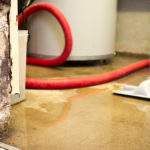 According to Natural Resources Canada, water heating is the second largest consumer of power in the typical Canadian home after space heating. On average, that’s anywhere from 17% of the total energy used. It’s not surprising then that many homeowners are on the lookout for a more energy-efficient alternative to their conventional hot water tank.
According to Natural Resources Canada, water heating is the second largest consumer of power in the typical Canadian home after space heating. On average, that’s anywhere from 17% of the total energy used. It’s not surprising then that many homeowners are on the lookout for a more energy-efficient alternative to their conventional hot water tank.
One option that’s gaining in popularity is the tankless hot water system also known as the instantaneous water heaters or demand-type. These save energy by heating water directly and only supplying the required amount without the need of a storage tank.
So, for the HVAC installer, there are quite a few things to consider with tankless water heater systems. For starters, there needs to be discussions with the customer on their requirements and their budget. Next are issues like local codes, temperature of groundwater and ease of installation, as these will all affect the final recommendations. It’s a lot more complicated than a simple hot water tank installation but if done right, this product will give the homeowner better service and save them money.
How a storage tank system works
With the conventional storage tank system, heat continually radiates from the tank. The heater must maintain the temperature of the stored water. This is particularly inefficient as there can be long periods between demands for hot water. Also, the amount of hot water supplied is limited by the capacity of the tank. A larger tank will give a longer supply of hot water but will also take longer to heat up once emptied.
How tankless heaters work in real-time
Tankless water heaters on the other hand, heat cold water as it passes through the unit either by using a gas burner or electrical elements. They can supply hot water continuously for as long as required and there is no need to wait for a storage tank to heat up.
One drawback is that the rate of flow is limited by the capacity of the unit. The gas-fired type delivers a higher flow rate than electric ones and gets hot quicker. However, even a large gas-fired unit may not be able to keep up with simultaneous demand from showers, dishwashers and washing machines. One solution is to have more than one heater connected together or have separate units dedicated to appliances that use a lot of hot water.
According to Energy.gov: “For homes that use 41 gallons or less of hot water daily, demand water heaters can be 24% – 34% more energy-efficient than conventional storage tank water heaters.” They add that savings are even greater if there is a unit attached to every hot water outlet.
On-demand heating costs more
Of course, having more than one heater will cost more and, the tankless type is considerably more expensive to buy and install to begin with. This has led to a lot of skepticism on whether there are sufficient savings in the long run to warrant the cost of going tankless. On top of that, additional gas-fired heaters will need extra venting and gas lines adding more expense and complicating installation.
But now there’s the more efficient, condensing type of tankless gas-fired water heater. The traditional non-condensing type requires Category III stainless steel venting connected to high quality wall caps or roof vents. The condensing type not only uses less energy but also can use PVC or polypropylene for venting, which significantly reduces the cost of materials and installation of multiple heaters.



